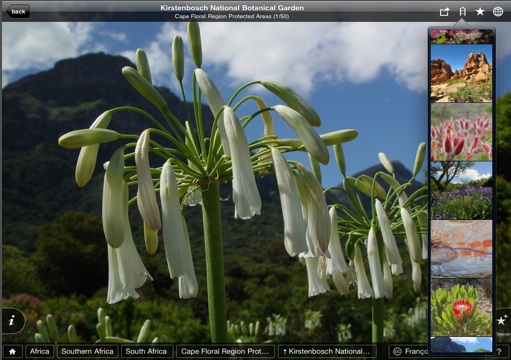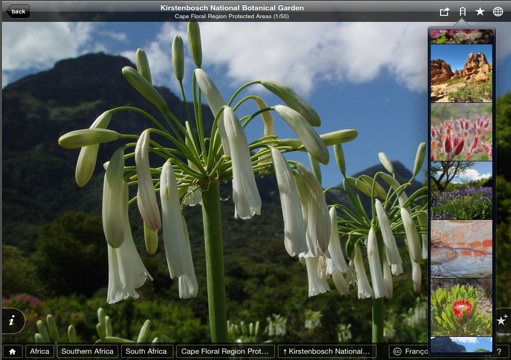The iPad is fostering all sorts of new ideas for how to create digital books, and the most interesting ones do not come in iBook form. Instead, they are being delivered as apps. A great example of this is Fotopedia Heritage, the first of a series of photo books for the iPad and iPhone (iTunes link).
It is not just a photo book dumped into the iPad. The Fotopedia photo book app goes well beyond what any conventional coffee table photo book can offer, making more than 20,000 high quality images of World Heritage sites available literally at your fingertips. Fotopedia creator, and former Apple technologist, Jean-Marie Hullot, gave me a run-through of the app in the video above (apologies in advance for the poor lighting, I took this on my iPhone).
The app is also available on the iPhone, but it was really designed with the iPad in mind. You can browse through stunning photos of World Heritage sites by simply swiping through them. Each photo has a number of tags related to the places and objects they depict. By pressing a tag with your finger, you can switch from photos of France to photos of Paris to photos of the Eiffel Tower, or from photos of Thailand to photos of temples. In this way, you can hop from one set of related photos to the next. If you want to go faster, you can pull up a filmstrip which appears on the right hand side and can be swiped independently.
All of the photos are pulled from Fotopedia, a social photo site which launched two years ago at TechCrunch50. The community of photographers on Fotopedia are extremely talented, most of the photos are under Creative Commons license, and each photo is linked to a Google Map and Wikipedia article. It is designed to document the world through photos. The iPad book is a way to organize a specific collection of photos. Fotopedia will release a new book every month or so. The next one is on national parks.
Since Fotopedia is a structured database of photos. Most photos are linked to Wikipedia articles, which create the foundational text for the book. You can also see on a map where any photo was taken, as well as links to TripAdvisor. And any photo can be shared via email, Facebook, or Twitter.
The Fotopedia books will be free when they are assembled from community photos with a Creative Commons license, it will also be a template for photographers on Fotopedia to join together and create paid-download photo apps using other images. In those cases, Fotopedia would get a cut of the download sales.
The app is essentially a slice of the Fotopedia Website packaged up nicely. I asked Hullot why doesn’t he simply do the same thing in the browser. His answer is that he will, but that it won’t be as seamless as the app. Still, this approach to digital books shows what can be accomplished when a digital book is connected to the Web—you get endless selection, and structured data that is searchable and shareable. Eventually, there shouldn’t be any difference between books and the Web.

